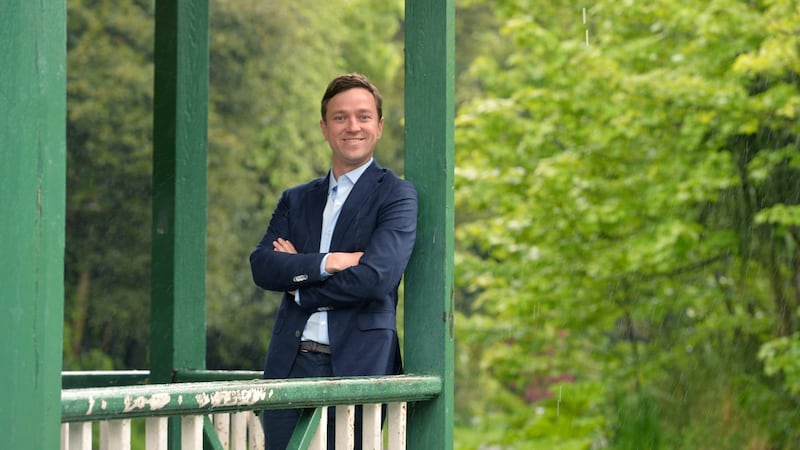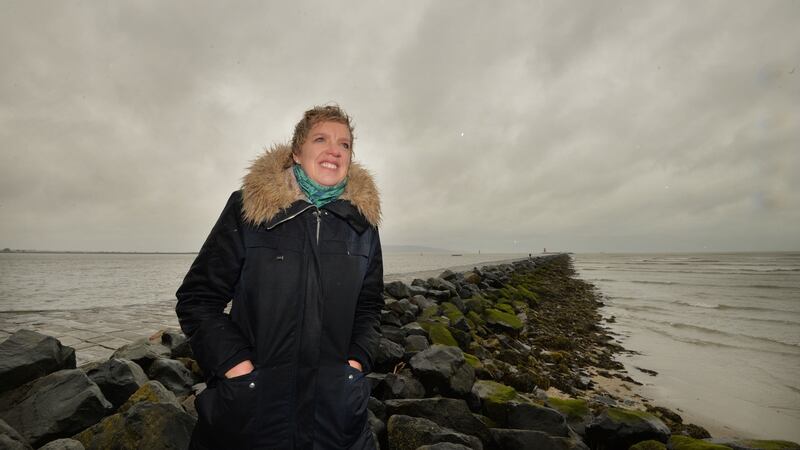When Fine Gael's James Geoghegan and his team went out for their first leaflet drop in Dublin Bay South during the week, they suited up like they were going into an isolation ward. They set off in pods of six wearing masks, carrying hand sanitiser and conspicuously following social-distancing guidelines.
Yes, to quote randomly a taoiseach from last year, this is going to be a byelection like no other. Covid-19 will mean no interceptions at Luas stops, no ambushes at Dart stations and no buttonholing at front doors in Dublin Bay South. The dimensions of the main campaign pitch could well be the size of a smartphone.
Consequently, the campaign could be a monochrome experience. Yet, the outcome and all its implications will not lack drama or huge significance for political parties.


A year into this Coalition a poor showing for any of its three parties could seriously deflate morale and provoke searching questions about leadership and direction. If a smaller party wheels the scrum and takes it against the head, an open field will yawn before it. If Sinn Féin takes it, we will almost certainly know what party will lead the next government.
Dublin Bay South, with its leafy suburbs and pockets of high affluence, has a reputation as a Fine Gael stronghold and one of the most liberal constituencies in the State.
Located between two rivers to the north and south (the Liffey and the Dodder) it extends from the sea at Poolbeg to Harold's Cross and Terenure. The 2016 census recorded a population of 121,000. Among those are some of the richest people in the country but there are also big working-class areas: including Pearse Street and Ringsend.
This constituency has a number of idiosyncrasies. A quarter or people who live here are non-Irish, way above the national average. Surprisingly, it has consistently had one of the lowest turnouts in the country – circa 54 per cent. That has traditionally been attributed to the large swathe of flat land in Rathmines and Ranelagh. People register to vote there and then move on without the register being updated.
Its affluence is borne out by the statistics. Half of adults are professionals or managers (compared to 36 per cent nationally) while 57 per cent have third-level qualifications (28.5 per cent nationally).
The mercury that measures that affluence continues to rise. Many period houses have been reconverted from flats into family homes. The dramatic fall in traditional bedsits has been more than balanced by new-build apartments, while docklands development has created a vibrant (and expensive) new quarter with a younger population living in thousands of apartments.
The statistics on housing show further quirks. Almost 50 per cent of people live in apartments: that's four times the national figure. There's another attention-grabbing figure: 44 per cent live in privately rented apartments. That last one is very significant in the context of this election. Every single person involved in the race – bar none – immediately identifies housing as the overriding issue. There is no dispute. Prices here are stratospheric. Hazel Chu, one of two Green councillors vying for the party's nomination at its convention on June 4th, references a one-bedroom cottage on the market for €525,000. Her colleague Claire Byrne talks about massive overcrowding and long waiting lists in the south inner city due to lack of supply. Fianna Fáíl's candidate Deirdre Conroy argues that for first-time buyers "nobody earns so much that they can spend €500,000 on a one-bedroom apartment".
Younger adults who grew up in the area are priced out of the housing market. As it did in 2020, that will undoubtedly influence their votes, as well as their parents’ votes in many cases.
Labour's candidate Ivana Bacik notes the German investment fund, Patrizia, bulk-buying 166 apartments for private rental (at €560,000 each) in Mount Argus, closing another door for locals seeking to buy.
“There are people living with their parents trying to save up to buy their first home,” says Bacik. “They don’t have a hope. Mount Argus is a stark symbol of that.”
Geoghegan says: “We are trying to deliver solutions to the crisis.”
For him, the Glass Bottle site in Poolbeg is critical with a potential 3,500 new builds, of which 900 will be social and affordable. “Those [900] will be significantly below market price. It will give hope to local people,” he says.
The problem is that solving housing is not a rabbit that can be pulled from a hat. By the time the solutions on which Government candidates pin their hopes – including cost rental and homes built on council land – are delivered, this election will be a distant memory.

Even before all candidates are selected Geoghegan is odds-on favourite. To temper that, a few factors need to be kept in mind. Byelections tend not to go with ruling parties. A party going into government is like a brand new car: the moment it is driven from the showroom its value has dropped by thousands of euro.
Since Noel Treacy won Galway East for the ruling Fianna Fáil in 1982 there have been 32 byelections. Government parties have won only three of those. Two of those were won by relatives (Helen McEntee and Gabrielle McFadden) of TDs who had died. The other was won by Labour in 2011, only months after it had won a record 37 seats in the general election. A year later, it would not have had a hope.
Fine Gael won about 25 per cent of the vote in January 2020. For Geoghegan to win, he needs 50 per cent plus one vote. He will need to put clear water between himself and the other candidates and also get transfers. While the constituency has a reputation for being blue, it is also fickle. In the past, the most popular candidates in one election (Michael McDowell, Lucinda Creighton, Frances Fitzgerald) have been unceremoniously dumped in the next.
For Geoghegan, the election is his to lose and that’s never an ideal starting position. His cause was not helped by hard criticism of the local organisation by prospective candidate Kate O’Connell who gave the door a good kick on her way out.
Already too, there’s been some poison pen stuff directed at him. An anonymous flyer doing the rounds refers to Geoghegan’s involvement with the now defunct Renua and his role as a parliamentary assistant to Lucinda Creighton. The flyer claimed he is right wing and conservative.
“I do not hold the views of Renua or Lucinda Creighton,” is his response. “I voted to repeal the Eighth Amendment . . . It took far too long to right those wrongs so we could live in a country where women had safe and legal access to abortion.”
Candidate tensions within Fine Gael have also been a feature in the Greens. A lot see the battle for the nomination between Chu and Byrne as another proxy for internal feuds. That might not be altogether true anymore. A lot of heat has gone out of that row of late. This seems more a contest over who wins the right to succeed Eamon Ryan as a long-term Dáil candidate. Chu won an astounding 4,000 votes (or 33 per cent) in Pembroke in the 2019 local elections, Byrne won 29 per cent of the vote in the South Inner City. This is not 2019, though, or even 2020 when Ryan topped the poll in the generals. Now embedded in Government, none of their rivals can see the Greens winning. But Chu and Byrne are chipper. They know that their backing of active mobility (which means ditching the car) will lose votes, manifested already with blowback on the Sandymount cycle lanes and BusConnects scheme. "It will be difficult, there is no doubt," says Byrne cheerily. "But we are in it to win it."
When nominations closed on Thursday, Conroy was Fianna Fáil’s sole nominee. She is very new being a councillor only since 2019. She has strong public-issue credentials. She was the first to raise the issue of fatal foetal abnormalities nearly 20 years ago when she took a landmark case against the State. As an architectural historian she has also long argued publicly for proper strategic thinking on housing. Her problem is profile, which will be harder to raise in a Covid-19 campaign.
It is, therefore, hard to see Conroy improving on a result that translated into Jim O’Callaghan winning less than 14 per cent of the vote last year. Fianna Fáil have had a rough first year in Government – it’s banking on its big successes coming at the end of the term. But that will not butter any parsnips now. A poor result will be another body blow to the authority of Taoiseach Micheál Martin, but could also seriously dent O’Callaghan’s own leadership prospects. After all, he is Fianna Fáil’s director of elections.
Across the water, the so-called vaccine bounce has enabled Boris Johnson to transform himself from villain of the piece to semi-hero. It's striking that despite 250,000 shots being administered each week in this State, nobody has identified vaccine bounce as a factor right now. If the poll is in early July as anticipated, vaccines might very well give a "shot in the arm" to Government parties. It's also worth noting that activists from several parties believe that, on a low turnout, Fine Gael voters are likely to be the most likely to vote.

The dark horse is, undoubtedly, Ivana Bacik. She has run in several constituencies in the past with mixed results, but she lives in Portobello and her mother lives in Terenure. She is an academic with a national profile who has long campaigned on social issues such as abortion rights and equality issues. That gives her strong purchase in a markedly liberal constituency.
Labour is "all in" on her candidacy. After five years of being under the cosh electorally, a byelection win would be a massive morale boost to the party, similar to the impact of Pearse Doherty's huge 2010 byelection victory in Donegal South West.
What of Sinn Féin’s chances?
Sinn Féin is a fascinating proposition. This is not a spiritual homeland for the party though Chris Andrews has very strong support in Ringsend. A high-profile candidate might put it into the zone and it's certain it has been conducting polls to ascertain its chances. Lynn Boylan was mentioned but she is said to be focusing on Tallaght. Senator Fintan Warfield has also been mentioned as has co-opted councillor Daniel Céitinn. To win, its candidate would have to be ahead of the other opposition candidates from the start. That's a big ask.
The Social Democrats are also enjoying a moment politically. Similarly, they would need a really strong, high-profile candidate to stand any chance. None has emerged so far.
The other candidates who have declared so far are Brigid Purcell for People Before Profit and Cllr Mannix Flynn. Independent Senator Michael McDowell, a former TD in Dublin Bay South, has yet to decide if he will run as a candidate or not.
Local issues frequently mentioned by candidates are open spaces, childcare, elderly care, lack of playing facilities for quickly growing GAA clubs and soccer clubs like Ranelagh Gaels and Beechwood, violent assaults by mobs of teenagers at Luas stops and frequent incidents of anti-social behaviour (associated with large gatherings in Dartry and Portobello). In this Covid-19 election, the last two issues are, aptly, byproducts of Covid-19.













